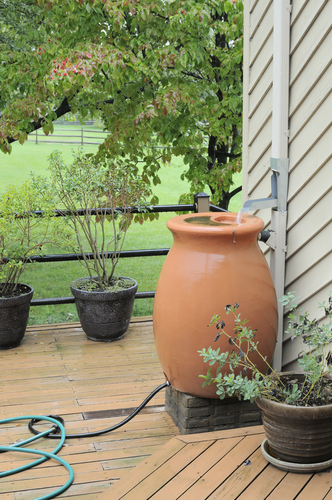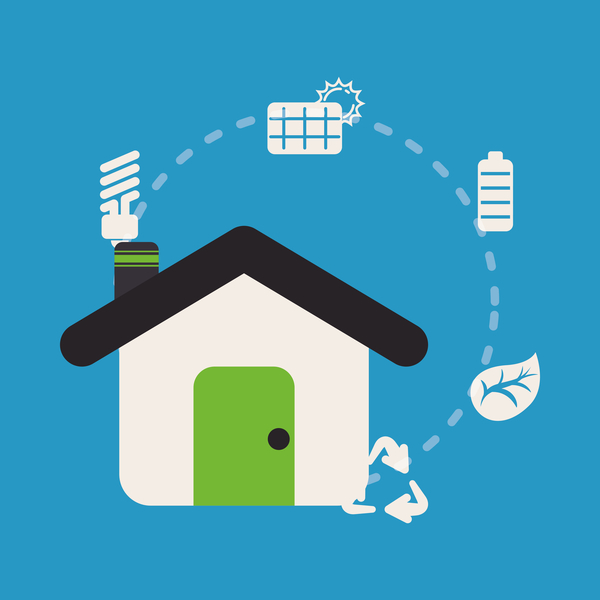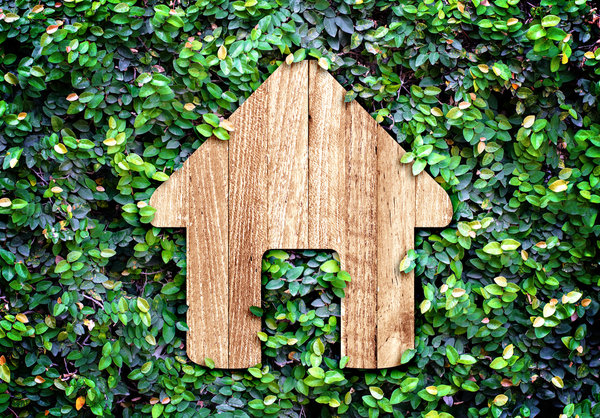Take the step towards sustainable living with these 7 tips. Inch yourself each day towards a zero-waste lifestyle while also making your home look and feel more peaceful and beautiful.
Typical US residential home owners spend approximately $2,150 each year on energy costs. However, a home that is designed to energy efficient standards, such as LEED-certifications, will spend about 30-60 percent less on energy costs overall.
There are many reasons to make your home more sustainable, and saving money on your energy bills is only one reason. Many people choose to go greener to save the environment for future generations by reducing their carbon footprints.
Fortunately, making your home more sustainable may not be as complicated or expensive as you might think. Here are seven key things you can start with today:
- Choose Materials Wisely
Even the materials you use to build your home or use in remodeling projects can have a big impact on the environment. Use reclaimed materials, such as old barn wood or items leftover from building projects.
Choosing non-toxic materials can also help the environment. Indoor air is about three times as polluted as outdoor air with paint as a culprit to pollution contribution from heavy metals. Protect your health by choosing non-toxic paint and sustainable materials.
- Use some Solar Energy
Perhaps you aren’t quite ready to go whole home solar. Installing enough solar panels to power an entire home can surmount to a costly proposition up front. However, you can start with a few solar panels to run things such as a swimming pool pump or outdoor lighting. It is better to start small and work your way up than not to do anything at all.
You might also want to look into other types of sustainable energy, such as geo thermal water heaters and windmills.
- Recycle
Recycling is an obvious, inexpensive, and easy way to help out the environment. There are many different ways you can recycle. The simplest is to keep glass, plastic and paper in separate containers (depending on your local recycling system). Anything that will decompose, such as banana peels, you can throw on a compost pile in your yard. This is also advantageous to your gardening as you can put the compost on plants to help them thrive.
If you have recycling pickup in your area, it is a simple matter of placing these items into the appropriate bins on trash pickup day. If you live more rural or in a small town without a formal recycling, you may need to save the items until you have enough to make it a worth while trip to a recycling center. You may even earn a little money for recycling things like glass and aluminum.
- Choose Items Made with Sustainable Materials
When choosing items for your house, look for products made out of materials friendly to the environment. For example, instead of cutting down ash trees for hardwood flooring, consider using bamboo, which grows much more quickly and is friendlier to the environment.
Pay attention to the little things. Even the hand towels you choose for your guest bathroom should come from natural materials, such as cotton. Choose natural cleaning ingredients as well. Not only is this better because it reduces the pollution these companies are putting into the environment, but it is healthier for everyone in your home to avoid harsh chemicals. Try to choose companies that have made a commitment to be as green as possible in their own business practices and production or make your own products at home.

- Get a Rain Barrel
Water is a limited resource in this world. You might have a nice, organic garden where you grow your own vegetables or a few fruit trees on your property. During the hottest days of summer, these plants need watering, but there is no reason to rack up your water bill.
Instead, install a rain barrel that can catch water as it comes off your home’s downspouts. You can buy a small one at nearly any home supply store, and even wholesale clubs such as Sam’s Club or Costco during the summer months. Capture the extra water when it rains and use this to water your plants and for needs.
- Conserve Water in Other Ways
Become a water conservationist. Conserving waters has many benefits. It helps prevent future droughts when we reduce the amount of water we use. Conserving also helps to reduce the resources that go into purifying and delivering water to customers.
You can conserve water by shortening the length of your showers, getting an updated washer that uses less water and replacing a high volume toilet with a low-flow toilet. You’ll also want to do regular maintenance to make sure you don’t have any toilet or sink leaks in your home.
- Reduce Energy Usage
Actively work to reduce the amount of resources you use. Upgrade your appliances to ones that use less energy, for example. You can also stop the “energy vampires” in your home, as some in the green community like to call electronics.
There are things in your home that draw on the power even when you turn them off. These include computers, cell phones, smart TVs, and other electronics. This can account for as much as 10 percent of your energy usage.
Fortunately, you can reduce the energy drain in some very simple ways. Use a power strip to plug in items such as a computer or TV, so you can ensure they are truly “off” when you are finished using them. If you allow them to go into standby or sleep mode, they are likely sucking up power. You can also purchase items that have an Energy Star rating. These items are made with energy efficiency in mind and will be less likely to draw as much power overall.

Making your home sustainable allows you to do something positive for future generations. Conserving resources is smart both for the environment and for your own cost savings. And, going green doesn’t have to be a difficult concept. These seven simple moves will go a long way toward making your household greener. With a bit of effort, who knows just how green you can go.

This Women of Green guest blog is by Megan Ray Nichols. Megan writes about many environmental topics including, renewable energy, conservation and sustainability. She invites you to join the discussion on her own blog, Schooled By Science.
Women of Green is TURNING UP THE VOLUME of the feminine voice on the planet in order to create the world we know is possible.
